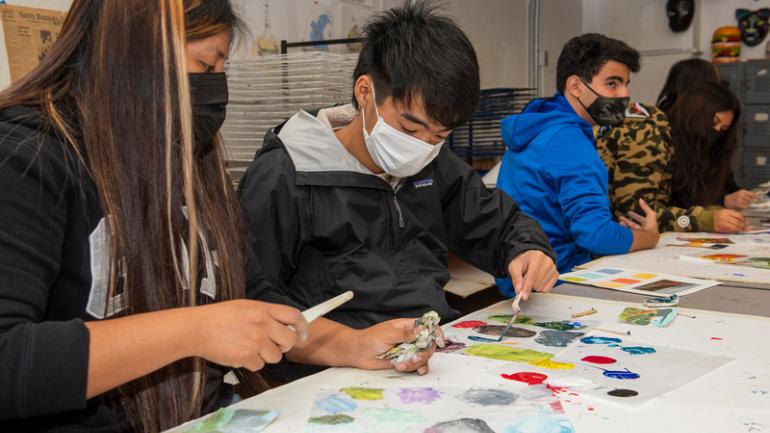
In many ways, the 2020-21 school year was the largest public education experiment we’re likely to see in our lives. And while few of us are eager to return to the days of full-time distance learning, like any good experiment, it yielded plenty of food for thought and some signposts for what to try next. At Gateway High, this has led to the development of Flex Blocks and Flex Days, time set aside from the regular academic schedule where students are encouraged to call the shots about how they will spend it – and this small change is already yielding big benefits.
“One thing we heard from families across several surveys during the past year was that one of the things that was actually helpful about distance learning was Monday morning office hours, where students could freely access tutoring and support,” said GHS Co-Principal Stephanie Khaziran. “As we prepared to return and reimagine in-person learning, we wanted to preserve that opportunity for students to receive academic support, as well as create some space for them to connect with their peers again.”
Twice a week, students have a Flex Block built into their schedule, during which they can seek out extra help from teachers in a class where they may be struggling or have a particularly big assignment due, or take advantage of other opportunities on campus: attend a counseling appointment, a movement class, or enjoy an enrichment activity. Throughout the semester, Flex Days are also scheduled, where students have all these options and more, including field trips or workshops hosted by partner organizations; students are encouraged to select the mix of academic and enrichment activities they feel are right for them. These Flex Days take the place of the traditional finals week, based on student feedback that a week for “reading and review” in place of regular classes encouraged cramming rather than real learning and wasn’t very effective in boosting final exam grades.
“When parents tell us they noticed their students becoming more independent learners during distance learning, that’s something we want to build on,” said Stephanie. “We don’t want school to feel like an institution, and giving students more ownership over how they spend their time here is a part of that.”
Change for Gateway’s schedule was inevitable: per recent changes to state laws, middle and high schools have shifted to later start times, with high schools beginning their day no earlier than 8:30 a.m. This means that the school day is finished later in the afternoon, making after-school activities and extracurriculars more difficult for many students to attend. With flex blocks built into the school day, however, clubs and teams still have the opportunity to meet and plan activities, keeping them accessible to as many students as possible. And getting into the habit of seeking out help during faculty “office hours” is a great habit to prepare for college, where new students often are intimidated by having to seek out professors independently.
Nor is it just the students who benefit. The flex schedule was designed over the summer by a faculty working group, who researched schools that had adopted similar schedules successfully and adapted their methods for GHS. As the year progresses, teachers are solicited for feedback about how the flex blocks and days are going, which has been positive: more than 90% of GHS faculty say the change has made their workday more manageable.
“Teachers are seeing that students are much more likely to seek out extra support during flex blocks than they were to come after school, which is better for everyone,” said Stephanie. “I hear things like ‘I can actually eat lunch during the lunch break now!’”
As the year progresses and the public health situation improves, staff are hoping to incorporate more field trips and community-based enrichment or service activities into the flex time schedules. But for now there’s plenty to do on campus, including movie days, mindfulness workshops, photography lessons and even the opportunity to learn how to tie-dye.
“We’re still in an ongoing pandemic, and we’re seeing our kids coming to school with a lot of different needs because of that,” said Stephanie. “This structure means that our kids are accessing more individualized learning, more support, and are more able to connect with each other and manage stress – all of which leads to more academic success.”